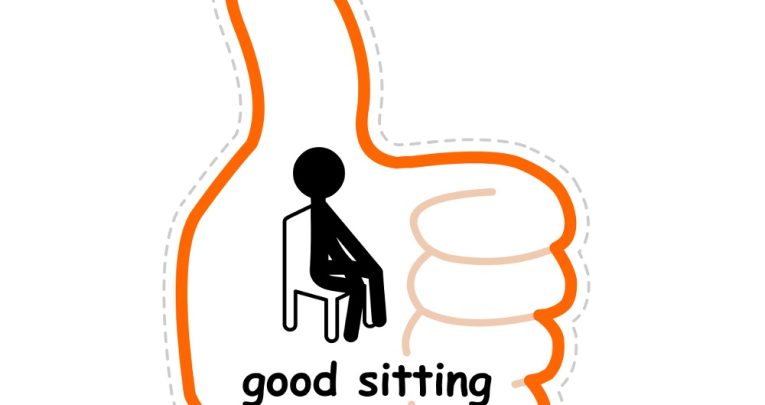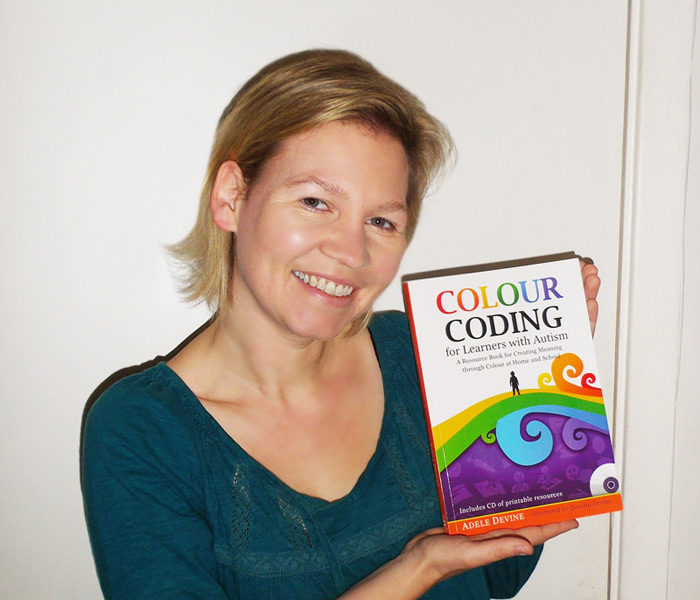How to Use Symbols to Help Children with SEND Succeed

Sometimes a simple, visual approach to communication can succeed where even the most well-chosen words will fail, says Adele Devine…

- by Adele Devine
- Early years and SEN specialist, author, keynote speaker and trainer Visit website

Imagine it’s your first day as a chef in a big, professional kitchen. Everyone is busy and shouting orders at each other. You want to help, but you don’t understand what they are shouting.
People keep brushing past you, frowning and making you feel like you are in the way. It’s hot, noisy and chaotic, and you have no idea what you are meant to do. How would you feel in such a situation? What might help you deal with it better?
Modelling behaviour
A busy classroom can be a daunting, noisy, confusing and uncomfortable place for a child when they first start school. You’ve created your zones, set out the most wonderful toys, art activities and have a routine – but then the child arrives who doesn’t seem to understand the expectation.
They might knock down other children’s brick towers, throw the sand, rip up the books and climb on the tables. They might push, snatch, kick or hit. Or maybe they rock in the corner or stand at the door crying, waiting for rescue.
We need to find ways to support them in this environment.
The French moralist Joseph Joubert once observed, “Children need models rather than critics.” How very true! Children need us to show them the way and set them up to succeed.
Sometimes small changes can make a big difference. Some of the children in your class might not respond well to lots of language but love being given a ‘thumbs up’.
Adding a little stick picture to a ‘thumbs up’-shaped token removes any questions about expectation and reduces the need for lots of language.
Think ‘show’ more than ‘tell’. It’s amazing what effect such a simple visual strategy can have – just take a look at the case studies on the following page!
Find out more about…
Case study – ‘Carly’s carousel’
A need for control Carly was a bright little girl with a diagnosis of autism. Her language was developing well, and she loved a challenge.
She enjoyed inset puzzles, building, sand play, the mud kitchen and anything new. She embraced completely child-led activities but could not tolerate adult demands. She would have a huge tantrum if she felt she wasn’t in control of her own day.
Carly was soon to start Year 1 and needed to get ready for the transition.
Communication breakdown Carly’s teacher had created a carousel of activities and each child had a visual schedule to follow. They would go to the red table to do some mark making, the blue table for playdough, the green table for cutting and sticking, and the yellow table for building. When they had finished, they could choose and play.
All of the activities were fun and motivating. The idea was to follow a ‘TEACCH’ structure to encourage the children to be more independent. Carly completed three of the activities and decided she was finished so went to play.
The teacher tried to explain that Carly hadn’t visited the green table to do cutting and sticking, and this resulted in a huge meltdown. Carly was distraught and could not process anything the teacher was saying.
In her mind this was a complete injustice. She had done work and wanted to play. The teacher felt she could not back down because Carly needed to learn to follow a structure. The lesson ended with both Carly and the teacher feeling dreadful.
Visual support I suggested we add a ‘thumbs up’ reward board to the structure. Carly would have a token board, and on the back there were five tokens.
The tokens were shaped like a ‘thumbs up’. The first token showed ‘Good sitting’ as the lesson started with a group activity. The next four tokens had simple line drawings showing ‘Good playdough’, ‘Good cutting’, ‘Good building’ and ‘Good reading’.
Each table had a corresponding thumb so that staff could point to them to remind Carly and keep her on task.
Once Carly had her five tokens she would get a sticker and could go and play. If Carly missed an activity, the teacher could point to the token that Carly still needed to get.
This clear visual structure worked so well for Carly. She loved getting all five thumbs up tokens, and the token board helped in other situations at home and at school. Brilliant!
Case study – ‘Archie’s assembly’
Cause for celebration? At the end of each week our whole school gathers for a celebration assembly. These assemblies are a lovely chance to celebrate, and one child from each class is awarded a ‘star-of-the-week’ certificate.
But for an autistic child who has never experienced assembly before, they might be confusing, noisy, intimidating and distressing.
A rocky start The first time we took Archie to assembly, we all sat on the bench, but Archie got bored very quickly. He started to squiggle himself under the bench and then, when a member of staff tried to stop this and get him sitting, he started scratching, kicking and crying.
Archie had no idea of the structure, of how long assembly would last, and had no reason to stay. His fight-or-flight instinct had kicked in, and there was nothing to do but let him leave.
I knew that assembly would be a feature of Archie’s life for many years, and was certain he could cope if given the right visual support.
Shifting focus
The following week I prepared Archie with a Social Story. I explained exactly what would happen during an assembly and how long it would be.
The assembly would be 15 minutes, so we could break this down so that he would get a ‘Good sitting’ thumbs up on his token board every three minutes.
He responded well to watching timers, so we took a three-minute timer to the assembly; when the sand had run through, he would get a thumbs-up token.
Archie sat and watched the sand intently, and seemed calmed by having something else to focus on. He sat for the whole assembly. But was Archie listening and learning during that time? He might not have been taking in the content of the assembly, but he was learning that he could cope with the occasion.
In time, Archie learnt to sit through the assembly without the need for the thumbs-up tokens. Looking at him now you would think there was never an issue. I always feel a rush of pride when I see him sitting in assemblies on a Friday. What a star!
10 ‘thumbs up’ signs to keep in your classroom…
- Good sharing
- Good sitting
- Good looking
- Good listening
- Good talking
- Good waiting
- Good tidying
- Good walking
- Good sand play
- Good water play
Adele Devine is a teacher at Portesbery school & director of SEN Assist. The main image of this feature, the ‘thumbs-up’ visual, is taken from the resource CD-ROM packaged with Adele’s book Colour Coding for Learners with Autism, published by Jessica Kingsley Publishers.










